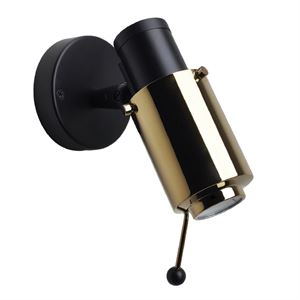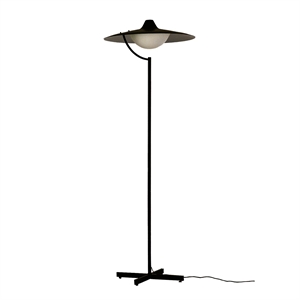








4.7/5.0 stars
+2400 reviews
+10 000 high-end designs
365 days return rights
Pricematch on all your products
Official retailer of +100 designer brands

BINY by DCWéditionsDCW éditionsin BINY-sarjan esittelyn myötä designmaailma on saanut malliston, jossa yhdistyvät toiminnallisuus ja minimalistinen estetiikka. Sarjan vuonna 1957 suunnitellut Jacques Biny esittelee täällä sekä seinä- että pöytävalaisimia väreissä, kuten valkoinen, musta, messinki ja kromi. Jokainen sarjan lamppu, esimerkiksi pöytävalaisin Biny N231, on luotu keskittyen tuottamaan optimaalista lukuvaloa sisäänrakennettujen, säädettävien läppien avulla. Seinävalaisin Biny N243, jossa on kiikarin inspiroima muotoilu, tarjoaa myös ylevän lukuvalon ja toimii täydellisesti sängyn vieressä. Nämä mallit ovat osa DCW éditionsin laajempaa valikoimaa, ja niitä voi tutkia tarkemmin verkossa tai DCW éditions -verkkosivuston kautta. suositut BINY-lamputDCW éditions Parisin BINY-lamppusarja erottuu ainutlaatuisella ja minimalistisella muotoilullaan. Merkittävistä malleista löytyy Biny -pöytävalaisin, jonka muotoilu on saanut inspiraationsa tuuletusakselista ja lisää maalaismaista tunnelmaa ympäristöön. Toinen malli, Biny spot, seinävalaisin, joka on säädettävissä ja sopii siten täydellisesti yöpöydän yläpuolelle projektorimaisen ulkonäön ansiosta modernilla käänteellä. Valaisimen säädettävä pää mahdollistaa valon suunnan helpon säätämisen, mikä korostaa sarjan toiminnallisuutta ja muotoilua. suunnittelija Jacques Biny, 1957Jacques Biny, syntynyt vuonna 1913, oli ranskalainen sisustussuunnittelija, joka perusti oman designstudion Luminaliten vuonna 1953. Hänen suunnittelussaan avainsanoja olivat toimivuus ja minimalismi. Hän keskittyi valoon ja sen vaikutukseen avaruuteen kokeilemalla erilaisia materiaaleja ja työstötekniikoita, kuten pleksilasia ja metallia. Hänen työnsä BINY-sarjassa vuonna 1957, jossa elegantti muotoilu ja käytännöllinen toimivuus yhdistettiin, tuli nopeasti suosituksi sekä Euroopassa että Amerikassa, mikä on osoitus hänen omistautumisestaan parantaa kotiympäristöä harkitun valaistuksen avulla. |